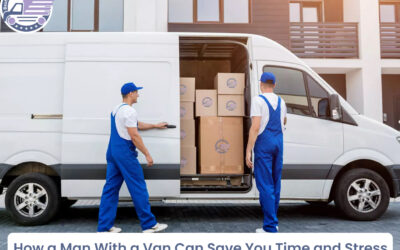Like numerous fitness enthusiasts, shifting to a new residence necessitates determining how to move gym equipment safely. The excitement that accompanies the buying phase often leads to the oversight or minimization of the bulkiness and significance of unique or delicate parts. Yet, this oversight can transform into a swift but only when the need to relocate arises.
Whether you’re upgrading your home gym or relocating your fitness facility, the process of moving gym equipment can be a daunting task. Ensuring the safety of both the equipment and the individuals involved requires careful planning and execution. This comprehensive blog by Best Auckland Removals will guide you on how to move gym equipment and also provide you with some hacks and tips for moving gym equipment safely and efficiently. With these gym equipment moving tips, you will learn everything from disassembly and packing to transport and reassembly. So, let’s navigate this process confidently with our Auckland movers.
Tips For Moving Gym Equipment Safely
Here are some helpful tips for moving gym equipment safely to your new place:
1. Assess And Plan
Before moving gym equipment, assess its size, weight, and complexity. One should measure the pathways so that the equipment can be easily moved. So, create a detailed plan that outlines the steps involved, including disassembly, packing, transport, and reassembly. This well-thought-out strategy minimizes potential risks and streamlines the entire process.
2. Clean And Sanitize Every Gym Equipment
A clean workout space enhances the overall experience and motivates you to engage in regular exercise without concerns about hygiene.
So, before packing your home gym, prioritize the cleanliness and sanitation of every gym equipment. This step is crucial not only for maintaining the equipment’s condition but also for ensuring a safe and hygienic workout environment. You must take the time to meticulously clean and disinfect all surfaces, handles, and touchpoints with a suitable disinfectant. By doing so, you eliminate germs, bacteria, and any potential contaminants that may have accumulated over time. This practice not only safeguards your health but also extends the lifespan of your equipment.
3. Disassemble All Their Parts
When dealing with larger and more complex gym equipment, the process of disassembly becomes essential. To ensure a smooth transition, it’s crucial to follow a systematic approach.
- Review Manufacturer Guidelines: Begin by thoroughly reviewing the manufacturer’s disassembly guidelines provided in the equipment manual. These instructions offer insights into the specific steps needed to disassemble the equipment safely.
- Gather Necessary Tools: Collect the required tools, such as wrenches, screwdrivers, pliers, and Allen keys. Having the appropriate tools on hand will make the disassembly process smoother and prevent unnecessary delays.
- Document Each Step: Before starting, document each step of the disassembly process. This can be done through written notes, photographs, or both. This documentation will serve as a valuable reference during the reassembly phase.
- Label Components: As you disassemble the equipment, label each component. You can use sticky labels, tape, or small bags to keep hardware and parts together. So, clearly label each bag or component to ensure easy identification during reassembly.
- Keep Hardware Together: Place all hardware and small parts in labeled bags or containers. This prevents hardware from getting misplaced or mixed up during the moving process.
Here’s a guide to disassembling different types of gym equipment for safe moving:
Treadmills:
- Unplug the treadmill and take out the safety key.
- Fold up the walking deck.
- Remove the front roller.
- Take off any other detachable parts.
Ellipticals:
- Unplug the elliptical and remove the safety key.
- Detach the pedals.
- Remove any other removable parts.
Stationary Bikes:
- Unplug the bike and remove the safety key.
- Ensure you remove the pedals.
- Take off the seat.
- Remove any other detachable parts.
Weight Machines:
- Unplug the machine and take out the safety key.
- Remove any weight plates.
- Adjust the seat to its lowest position.
- Take off any other removable parts.
4. Gather Supplies And Safely Pack
Proper packing guarantees the safety of your gym equipment during the move. This is one of the most crucial tips for moving gym equipment that will ensure the safety of your fitness gear while in transit. So, before you begin packing your gym equipment, gather all the necessary supplies, such as high-quality boxes, packing tape, moving blankets, bubble wrap, and packing sheets. Also, ensure you have enough protective padding to safeguard delicate parts during transit. In addition, you can utilize original packaging if available and support box bottoms with extra tape for added strength.
5. Proper Lifting
Due to the bulkiness of fitness equipment, enlisting a team of removalists skilled in proper lifting techniques is essential to ensure the safe handling of gym equipment. But when lifting the gym machines yourself, remember to bend your knees and lift with your legs rather than your back. It is essential to keep your posture upright to avoid strain. You can consider using lifting straps or harnesses to distribute the weight evenly and reduce the risk of injury for heavy and awkward items.
6. Secure Transportation
If you’re moving gym equipment yourself, selecting an appropriate vehicle is crucial. You must opt for a truck with a spacious load area that can accommodate the size of your gym equipment. Also, ensure the equipment is properly secured using tie-downs, straps, and padding to prevent movement during transit. It would help if you place heavier items on the bottom and lighter items on top to prevent damage or shifting.
7. Reassembly And Set Up In The New House
Upon reaching your new location, it’s time to reassemble and set up your gym equipment. Begin by referring to the documentation and notes you made during disassembly. Follow the steps in reverse to put each piece back together accurately. Take your time to ensure everything is properly aligned and secured. Once reassembled, test the equipment to ensure it’s functioning correctly and make any necessary adjustments.
Conclusion
Moving gym equipment safely demands careful planning, attention to detail, and utilization of proper techniques. By following these smart strategies and tips for moving gym equipment, you can ensure a smooth and secure relocation of your fitness gear. Whether you’re a dedicated home gym enthusiast or a fitness facility manager, the safety of your equipment and those involved in the move remains a top priority. So, approach the process with patience, organization, and a commitment to the well-being of both your equipment and yourself.
Despite knowing these gym equipment moving tips, you might be overwhelmed with the stress of moving a home gym. So, this is the right time to seek help from a professional moving company like Best Auckland Removals. Our team of well-qualified movers is trained to handle the complexities of the removal, which allow them to offer affordable moving services in Auckland. So, just dial 098896066 or get in touch through info@bestaucklandremovals.co.nz and let our house movers in Auckland manage your relocation of gym equipment.
Related Blogs
How a Man With a Van Can Save You Time and Stress
Moving is a big task that needs timely completion, and if not, it can easily build up the pressure. Even the small removals can become a big thing when not managed properly. Organising and packing everything from your belongings into boxes, ordering transport, and...
Cost-Saving Tips For Your Furniture Move In Auckland
Moving is such a fun chapter one can enter in life! But what happens when it comes to the removal of bulky items like sofas, beds, or dining tables? Handle with care- is what this furniture removal looks like! Looking for removalists who are true to their service and...
Packing Tips: Make Your Auckland Move Easier
The experience of moving to a new home in Auckland is thus exciting and tiresome. Otherwise, it could be termed perhaps one of the least troublesome activities if you are patient enough to organize and plan properly. This checklist will come in very handy whether you...




